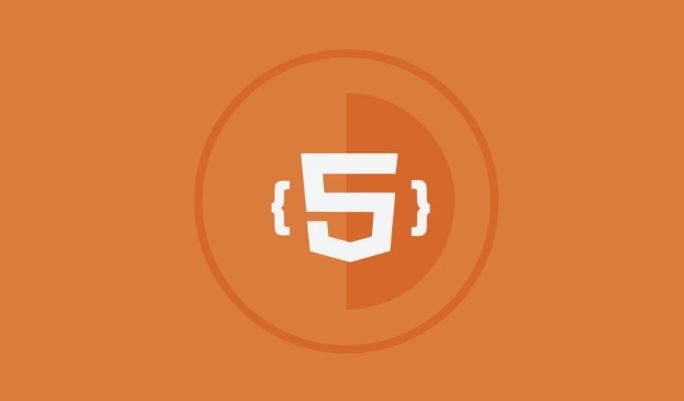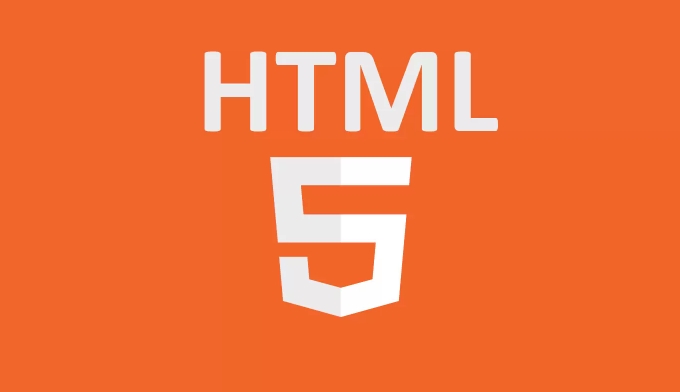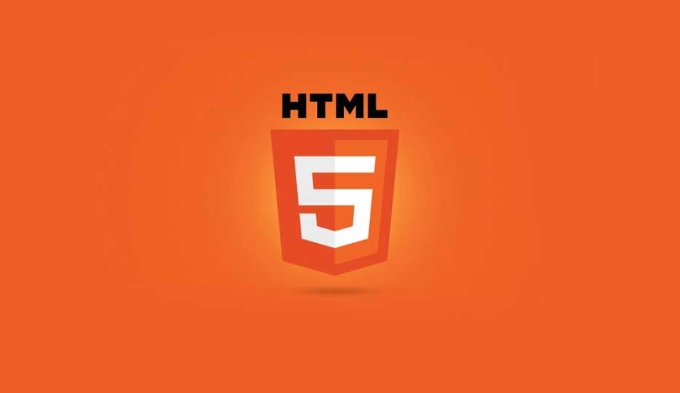What is the semantic difference between the and HTML tags?
Jun 27, 2025 am 12:38 AMThe core difference between <em> and <i> is in semantics: 1.<em> is used to emphasize content, affect SEO and accessibility; 2.<i> is used in pure style italics such as foreign languages ??or terms, without emphasis. The former conveys additional emotion or importance, while the latter only visually. When choosing, consider whether the significance needs to be emphasized and its impact on assistive technology.

The <i></i> and <em></em> tags in HTML might look similar because they both traditionally make text appears italicized, but their purposes are different. The key difference lies in semantics: <em></em> is used to emphasize content, while <i></i> is for text that is <em>styled in italics without emphasis , like foreign words, technical terms, or thoughts.
 and <em>HTML tags?" />
and <em>HTML tags?" /> Why Semantic Tags Matter
Before diving into the specific differences between <em></em> and <i></i> , it's worth understanding why semantic HTML matters at all. Search engines, screen readers, and other assistive technologies rely on semantic tags to interpret and present content meaningfully.
 and <em>HTML tags?" />
and <em>HTML tags?" /> For example, a screen reader might change its tone when it encounters an <em></em> tag to indicate emphasis, which it wouldn't do for an <i></i> tag. So even though both may visually look the same by default, they communicate very different things behind the scenes.
What <em></em> Really Means
The <em></em> tag stands for "emphasis." When you wrap text in <em></em> , you're telling browsers, search engines, and accessibility tools that this part of the sentence carries extra weight or emotion.
 and <em>HTML tags?" />
and <em>HTML tags?" /> Example:
<p>I really hope you <em>remember</em> this part.</p>
In this case, the word “remember” isn't just styled — it's urgent. Visually, it's often italicized, but the real point is the semantic value. This can help with SEO and accessibility alike.
Key points about <em> :
- Indicates emphasis
- Can be nested to increase the level of emphasis
- Screen readers may alter pronunciation accordingly
- Should be used when the tone or importance of a word changes
What <i> Is Actually For
The <i> tag does not carry the same emphasis as <em> . It's mean for text that should be set apart stylishly but not semantically. Common uses include:
- Foreign words (eg, <em>et cetera )
- Technical terms or species names (eg, <em>Homo sapiens )
- Thoughts, dreams, or internal monologue (when not emphasizing them)
- Other stylistic needs where italics are appropriate but no emphasis is intended
Example:
<p>The term <i>deus ex machina</i> comes from ancient theater.</p>
Here, the phrase is italicized, but it's not being emphasized — it's simply marked as a foreign term.
Important notes about <i></i> :
- No inherited semantic importance
- Often used purely for visual styling
- Should not be used when the goal is to emphasize meaning
- Avoid using it as a replacement for
<em></em>
When to Choose One Over the Other
Choosing between <em></em> and <i></i> depends on what you're trying to convey:
If the italics are there to highlight a shift in meaning, tone, or importance → use <em></em> If the italics are purely stylistic or conventional (like a Latin phrase or a character's thought) → use <i></i>
Also consider:
- Accessibility: Screen readers treat these tags differently
- SEO: Search engines may give more weight to content inside
<em></em> - Future maintenance: Semantic clarity helps others understand your code later
Final Note
You'll often see <i></i> misused in older websites or templates where developers only cared about appearance. But modern web development encourages using the right tool for the job — especially since non-semantic markup can hurt accessibility and SEO in subtle ways.
So next time you want something italicized, ask yourself: am I adding emphasis, or just style? That will guide whether to pick <em></em> or <i></i> .
Basically that's it.
The above is the detailed content of What is the semantic difference between the and HTML tags?. For more information, please follow other related articles on the PHP Chinese website!

Hot AI Tools

Undress AI Tool
Undress images for free

Undresser.AI Undress
AI-powered app for creating realistic nude photos

AI Clothes Remover
Online AI tool for removing clothes from photos.

Clothoff.io
AI clothes remover

Video Face Swap
Swap faces in any video effortlessly with our completely free AI face swap tool!

Hot Article

Hot Tools

Notepad++7.3.1
Easy-to-use and free code editor

SublimeText3 Chinese version
Chinese version, very easy to use

Zend Studio 13.0.1
Powerful PHP integrated development environment

Dreamweaver CS6
Visual web development tools

SublimeText3 Mac version
God-level code editing software (SublimeText3)
 Implementing Clickable Buttons Using the HTML button Element
Jul 07, 2025 am 02:31 AM
Implementing Clickable Buttons Using the HTML button Element
Jul 07, 2025 am 02:31 AM
To use HTML button elements to achieve clickable buttons, you must first master its basic usage and common precautions. 1. Create buttons with tags and define behaviors through type attributes (such as button, submit, reset), which is submitted by default; 2. Add interactive functions through JavaScript, which can be written inline or bind event listeners through ID to improve maintenance; 3. Use CSS to customize styles, including background color, border, rounded corners and hover/active status effects to enhance user experience; 4. Pay attention to common problems: make sure that the disabled attribute is not enabled, JS events are correctly bound, layout occlusion, and use the help of developer tools to troubleshoot exceptions. Master this
 Configuring Document Metadata Within the HTML head Element
Jul 09, 2025 am 02:30 AM
Configuring Document Metadata Within the HTML head Element
Jul 09, 2025 am 02:30 AM
Metadata in HTMLhead is crucial for SEO, social sharing, and browser behavior. 1. Set the page title and description, use and keep it concise and unique; 2. Add OpenGraph and Twitter card information to optimize social sharing effects, pay attention to the image size and use debugging tools to test; 3. Define the character set and viewport settings to ensure multi-language support is adapted to the mobile terminal; 4. Optional tags such as author copyright, robots control and canonical prevent duplicate content should also be configured reasonably.
 Best HTML tutorial for beginners in 2025
Jul 08, 2025 am 12:25 AM
Best HTML tutorial for beginners in 2025
Jul 08, 2025 am 12:25 AM
TolearnHTMLin2025,chooseatutorialthatbalanceshands-onpracticewithmodernstandardsandintegratesCSSandJavaScriptbasics.1.Prioritizehands-onlearningwithstep-by-stepprojectslikebuildingapersonalprofileorbloglayout.2.EnsureitcoversmodernHTMLelementssuchas,
 HTML for email templates tutorial
Jul 10, 2025 pm 02:01 PM
HTML for email templates tutorial
Jul 10, 2025 pm 02:01 PM
How to make HTML mail templates with good compatibility? First, you need to build a structure with tables to avoid using div flex or grid layout; secondly, all styles must be inlined and cannot rely on external CSS; then the picture should be added with alt description and use a public URL, and the buttons should be simulated with a table or td with background color; finally, you must test and adjust the details on multiple clients.
 How to associate captions with images or media using the html figure and figcaption elements?
Jul 07, 2025 am 02:30 AM
How to associate captions with images or media using the html figure and figcaption elements?
Jul 07, 2025 am 02:30 AM
Using HTML sums allows for intuitive and semantic clarity to add caption text to images or media. 1. Used to wrap independent media content, such as pictures, videos or code blocks; 2. It is placed as its explanatory text, and can be located above or below the media; 3. They not only improve the clarity of the page structure, but also enhance accessibility and SEO effect; 4. When using it, you should pay attention to avoid abuse, and apply to content that needs to be emphasized and accompanied by description, rather than ordinary decorative pictures; 5. The alt attribute that cannot be ignored, which is different from figcaption; 6. The figcaption is flexible and can be placed at the top or bottom of the figure as needed. Using these two tags correctly helps to build semantic and easy to understand web content.
 How to handle forms submission in HTML without a server?
Jul 09, 2025 am 01:14 AM
How to handle forms submission in HTML without a server?
Jul 09, 2025 am 01:14 AM
When there is no backend server, HTML form submission can still be processed through front-end technology or third-party services. Specific methods include: 1. Use JavaScript to intercept form submissions to achieve input verification and user feedback, but the data will not be persisted; 2. Use third-party serverless form services such as Formspree to collect data and provide email notification and redirection functions; 3. Use localStorage to store temporary client data, which is suitable for saving user preferences or managing single-page application status, but is not suitable for long-term storage of sensitive information.
 What are the most commonly used global attributes in html?
Jul 10, 2025 am 10:58 AM
What are the most commonly used global attributes in html?
Jul 10, 2025 am 10:58 AM
class, id, style, data-, and title are the most commonly used global attributes in HTML. class is used to specify one or more class names to facilitate style setting and JavaScript operations; id provides unique identifiers for elements, suitable for anchor jumps and JavaScript control; style allows for inline styles to be added, suitable for temporary debugging but not recommended for large-scale use; data-properties are used to store custom data, which is convenient for front-end and back-end interaction; title is used to add mouseover prompts, but its style and behavior are limited by the browser. Reasonable selection of these attributes can improve development efficiency and user experience.
 Implementing Native Lazy Loading for Images in HTML
Jul 12, 2025 am 12:48 AM
Implementing Native Lazy Loading for Images in HTML
Jul 12, 2025 am 12:48 AM
Native lazy loading is a built-in browser function that enables lazy loading of pictures by adding loading="lazy" attribute to the tag. 1. It does not require JavaScript or third-party libraries, and is used directly in HTML; 2. It is suitable for pictures that are not displayed on the first screen below the page, picture gallery scrolling add-ons and large picture resources; 3. It is not suitable for pictures with first screen or display:none; 4. When using it, a suitable placeholder should be set to avoid layout jitter; 5. It should optimize responsive image loading in combination with srcset and sizes attributes; 6. Compatibility issues need to be considered. Some old browsers do not support it. They can be used through feature detection and combined with JavaScript solutions.






